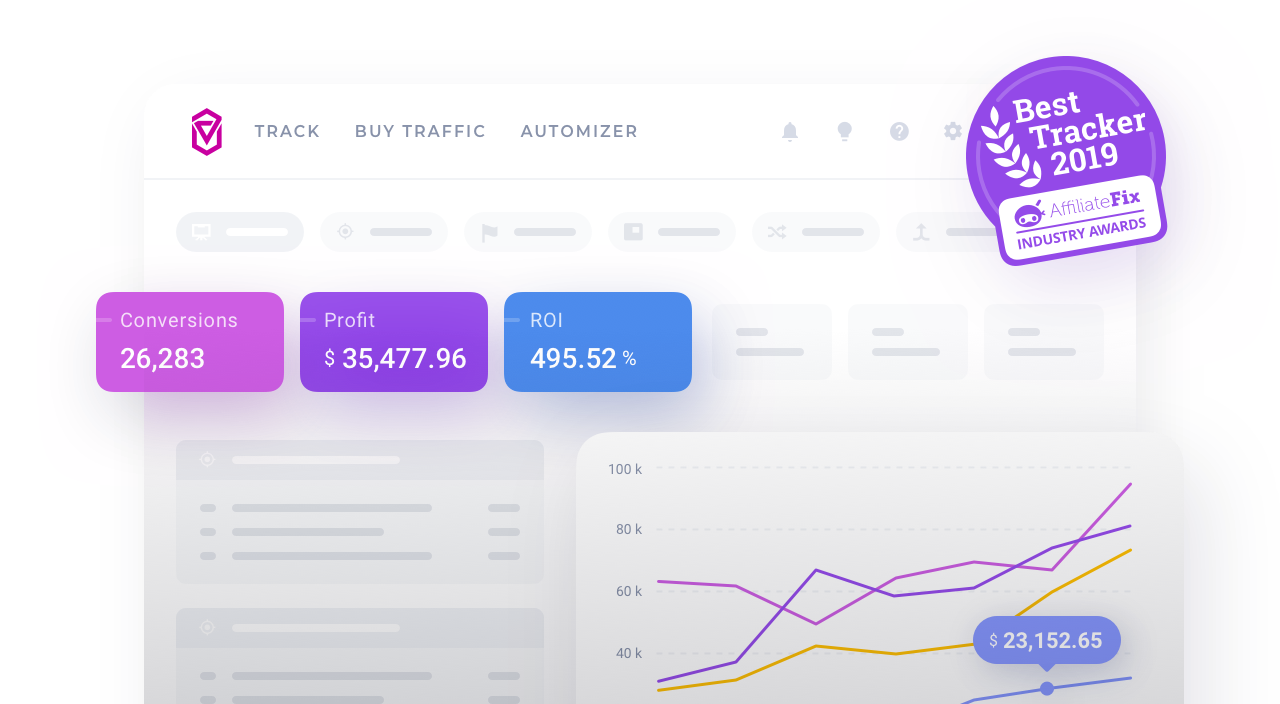WordPress and Voluum
WordPress is a popular platform for setting up content web pages. It may be also used to set up a landing page in an affiliate campaign funnel.
Voluum Note: Although WordPress is popular and easy to use, we do not recommend using it as a way to set up a landing page if you expect high traffic volumes. WordPress pages tend to load slowly, especially during heavy traffic, so your bounce rate may increase. As a beginner step or with low traffic volumes, WordPress should work fine.
Before You Start
You need the following things to use your WordPress page as a landing page with Voluum:
- An active Voluum account
- An offer
- A traffic source
- A landing page set up and publicly available
- (Optional) A WordPress plugin that allows you to insert scripts to a landing page. This is used to implement a direct tracking script, if you choose to go with a direct method of tracking. There are many scripts that can do the job, you can use this one: https://wordpress.org/plugins/header-footer-code-manager/
Once you have everything ready, proceed with the guide.
I. Create a campaign in Voluum
The first thing you need to do is to create a campaign in Voluum.
A. (Optionally) Create an affiliate network element. Read the Add an Affiliate Network to Voluum article to learn how to do that.
B. Create an offer element. Read the Add an Offer to Voluum article to learn how to do that.
C. Create a lander element. Submit your WordPress page URL as a lander URL. Read the Add a Lander Element article to learn more.
D. Create a traffic source element. Voluum provides you with various traffic source templates. Read the Add a Traffic Source to Voluum from a Template article to learn more.
When creating a traffic source, you may decide that you want to use a direct method of tracking. In that case, enable Direct tracking in a traffic source's setup.
E. Create a campaign. Create a campaign with all the elements that you have just created. Once you save your campaign, you will be directed to the TRACKING & AUTOMIZER tab. Once there, do the following:
- Copy the campaign URL (or Direct tracking URL - Lander for the direct tracking option) to any text editing tool. Submit this URL to your traffic source platform.
- (Optional) If you have decided to go with the direct method of traffic, select the Direct tracking radio button at the top of the campaign form and copy the direct tracking script to any text editing tool.
-
Copy the click URL(s) to any text editing tool.

Go to the next paragraph for the second step of the setup.
II. Set Up a WordPress Page as a Landing Page
The final piece of the puzzle is to put a click URL or URL into your landing page and, if you use a direct method of tracking, a direct tracking script for lander on your WordPress page.
I. Implement a click URL
Click URLs should be implemented as any other links on your page. They can be hidden under images or text. Create a link and paste the click URL that you have copied from Voluum:

II. (Optional) Implement a Direct Tracking Script
If you want to add scripts to a web page, you need to use a plugin. A Direct tracking script should be implemented in the <body> section of a landing page. In WordPress, this means that you have to find a plugin that allows you to add script to page's footer. What is more, this plugin should allows you to add a different script to each of your pages individually.
We have selected the Header Footer Code Manager plugin that can do just that, but you can use a different plugin that fulfills the above requirements. This plugin is available under the following address: https://wordpress.org/plugins/header-footer-code-manager/
Once you have installed this plugin, go to the plugin's settings page and follow the step below:
- In the HFCM plugin setting, click the Add New Snippet button.
- Provide a name for the snippet
- Select pages you want this script to be applied for.
- Select "Footer" from the Location drop-down menu.
- Paste the direct tracking script in the Snippet / Code text field.
-
Click the Save button.

You are done. Your WordPress page will now be used as a landing page.


